Cilantro is a popular, cool-to-warm weather, fast-growing, and easy to grow, annual herb. The Cilantro flavor guarantees to pick up a dish! It is grown primarily for its potent fragrant leaves (Cilantro) and its aromatic seeds (Coriander). Both are harvested for culinary use. This article will answer your questions on growing Cilantro including how often to water your Cilantro plants?
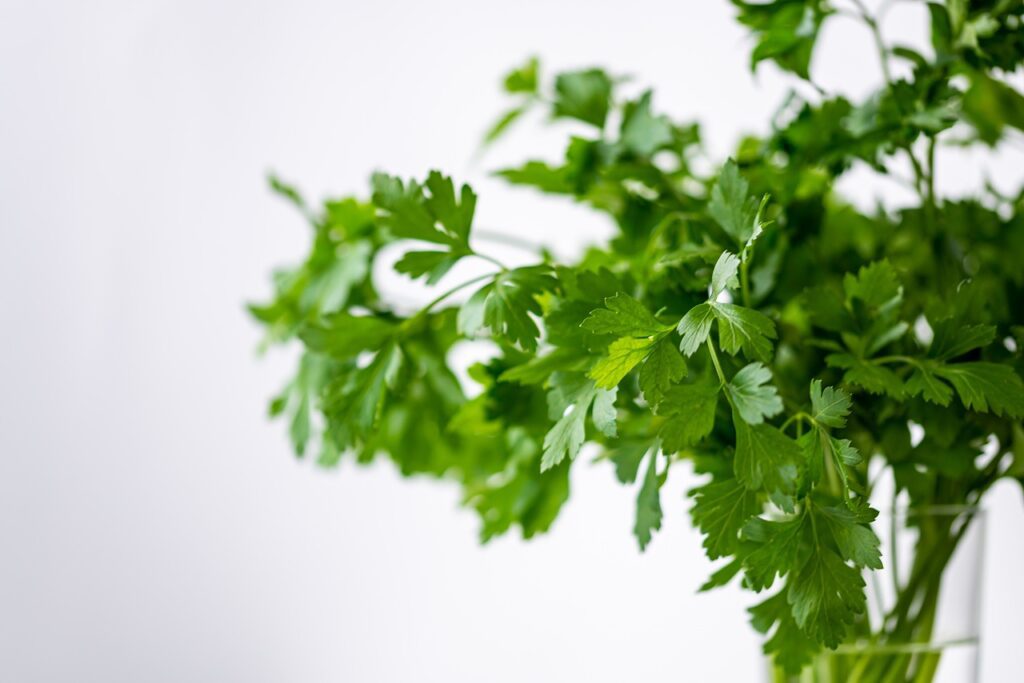
This is our complete guide to how to grow a bountiful harvest of Cilantro from your own garden or container.
Cilantro (Coriander)
Cilantro (Coriandrum Sativum) is an annual herb in the family Apiaceae. It is native to regions spanning from Southern Europe and Northern Africa to Southwestern Asia. There are reports of Cilantro being grown in ancient Egyptian gardens. Cilantro seeds have been found in Egyptian tombs. It has been cultivated for thousands of years in India and China. Cilantro was introduced into Mexico and Peru by the Spanish conquistadors. This herb has a long and storied history!
The seeds can be successfully sowed in raised beds, conventional in-ground (rows) and in containers. Cilantro can be grown inside in a container assuming they get the light needed to grow.
How often to Water Cilantro Plants?
Cilantro requires watering every 1 – 3 days depending on how moist the soil is, how deep in the soil you water, along with the impact of the climate, especially temperature, humidity, and wind. A general rule of thumb is to provide at least 1 inch of water per week.
Grow cilantro in the Fall and Early Spring in cool-to-warm climates including the Southwest and Southeast portions of the US. Summer in the US South, when temperatures reach 90 degrees F, is not a great climate for growing Cilantro. A run of higher temperatures will lead to Cilantro bolting and going to seed quickly.
Start harvesting leaves as soon as the plant reaches 6 to 8 inches tall. This usually occurs no less than 30 days from germination. Seeds are typically ready to harvest after 90 to 100 days or more.
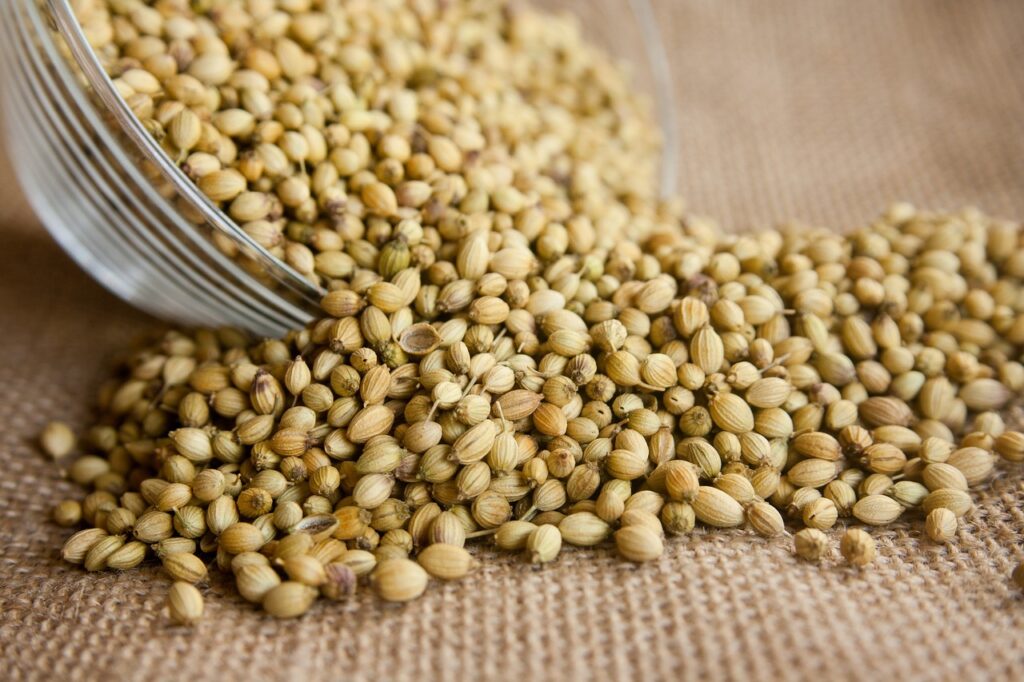
The name Cilantro is interchangeable with Coriander. Coriander is the term most often used when referring to Cilantro seeds. The seeds are typically used whole or crushed up and sold as a spice. Fresh Cilantro leaves may also be called fresh Coriander leaves depending on the region. Cilantro is also commonly referred to as Mexican or Chinese Parsley.
Tastes like Soap
Interesting enough, Cilantro can have a polarizing taste. Somewhere around 10% of the population think cilantro taste like soap. This is due in part to a genetic disposition to a specific olfactory-receptor which makes Cilantro taste like soap.
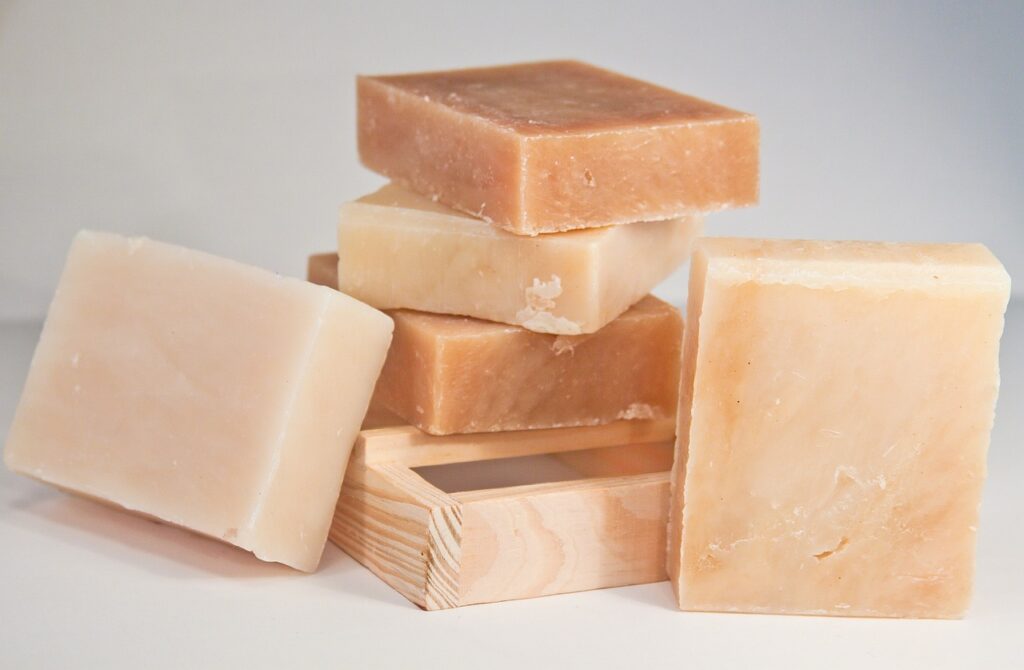
Lifecycle
The Cilantro plant has a reasonably short life cycle. In general, the seed germinates in 7 – 10 days, leaves can be harvested once the plant reaches 6 – 8 inches which can happen as fast as 30 days, then the seeds can be harvested somewhere at 90 days or beyond.
The following diagram illustrates the life cycle of Cilantro.
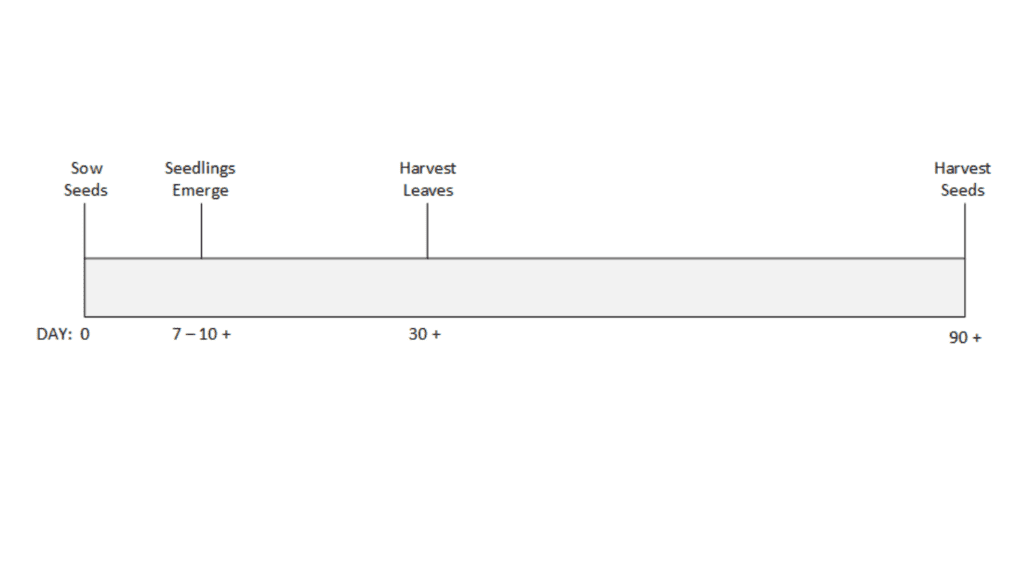
Where to Plant Cilantro
Location
Cilantro can be successfully grown in USDA Hardiness Growing Zones 3 to 10. It will grow in a conventional in-ground garden, a raised bed garden and in containers. I’ve been successful in all three.
If growing in a container, make sure that the container has proper drainage. You may need to drill a few extra holes in the bottom. The container must also be at least 12 inches deep. These 7-gallon grow bags are 12 inches deep so that is a low-cost solution for growing Cilantro. Of course, if a grow bag is used, you don’t need to drill out drainage holes. Grow bags by default have good drainage.
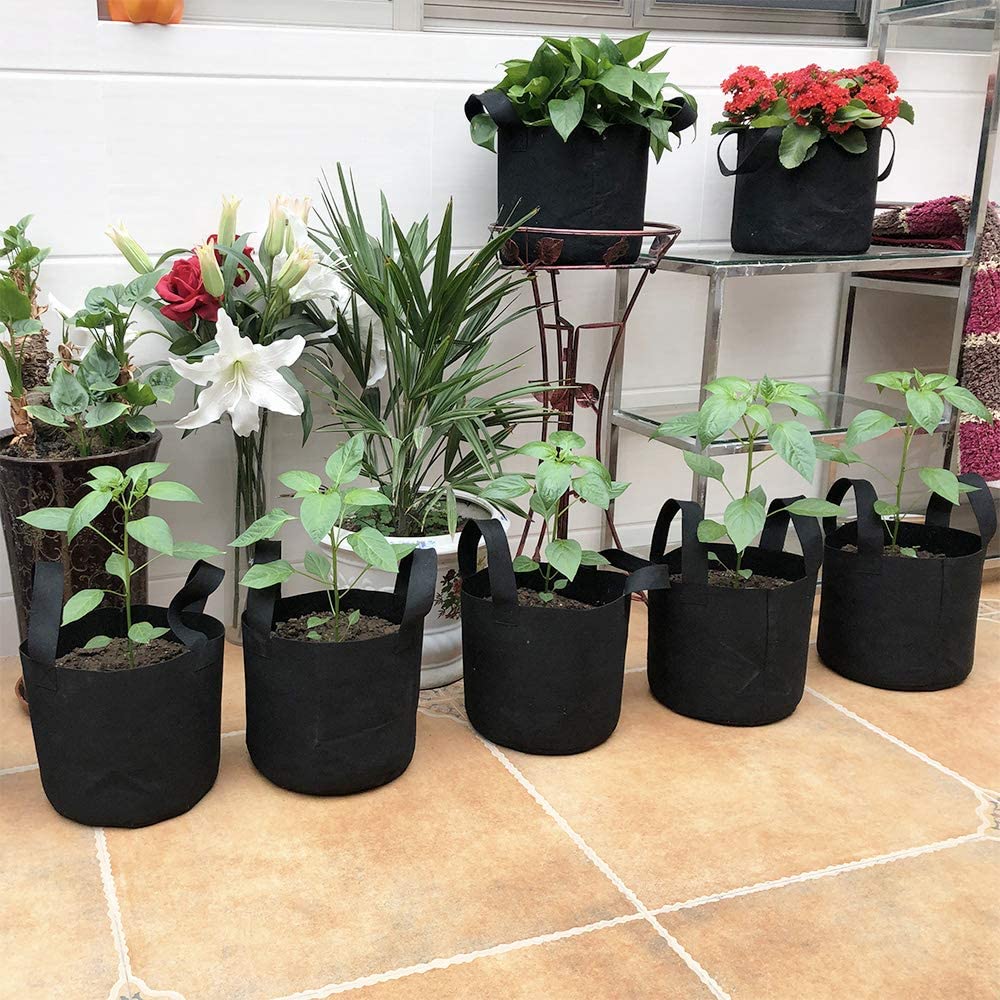
Growing Cilantro in a container or grow bag is advantageous. It’s more cost effective. Plus, you can more easily move it out of the direct sun if temperatures get too excessive. Plastic pots vs ceramic or stone pots weigh a lot less if you have to move them.
Soil Requirements
Cilantro grows best in well-drained soil that also retains water. For example, in my raised bed soil, I use sphagnum peat moss and course vermiculite, along with a blend of composts, that help keep your soil friable and healthy, but also allows it to drain well while also retaining moisture. If growing in containers, a good commercial potting mix should do well.
Cilantro prefers a soil pH of 6.0 to 6.7. If you don’t know your soil’s pH, you can get a simple pH testing kit here.
Lighting
Cilantro needs 4 to 6 hours of direct sunlight per day. More than this and it might get too much sun. They grow well in light shade areas of your garden beds or containers, but you still want it to be exposed to at least 4 to 6 hours of sunlight.
Sowing Inside
You can sow Cilantro inside, but the preference is to sow the seeds in the location you wish them to grow in. The Cilantro’s root structure damages easily leading to the plant not thriving if transplanted. Cilantro has a taproot which is a center root that goes deep. You do not want to damage that part or any part of the root system.
How Big is the Plant
Cilantro will grow 1 to 2 feet tall with a width of 6 to 12 inches. If growing Cilantro for the seeds, Coriander, in some cases, may need help to support the plant as the seeds develop.
Plant Hardiness
Grow Cilantro successfully in USDA Hardiness Growing Zones 3 to 10. Cilantro likes cool-to- warm temperatures, with a preferred temperature range of 60 to 80 degrees F. It is hardy up to a light frost. In warm to hot climates, like in the deep southern states, you must grow these in the early Fall and Spring as the hot temperatures will cause it to bolt and go-to-seed. With such a wide range of zones, and climates, you really need to understand your first and last frosts of the year to plan accordingly.
When to Plant Cilantro
Outdoors Sowing
For Spring plantings, sow Cilantro seeds ¼” to ½” in the garden soil about 2 to 3 weeks before the last frost of the Spring. The plant can survive a light frost. Summer heat in warmer climates may not be a good time to sow seeds so you wouldn’t want to sow seeds in the late Spring or early Summer as you take a chance with the heat causing your plants to bolt. However, plan you fall seed sowing as temperatures begin to cool some in the early Fall and you should time your last succession plantings so that you get your last harvest in before the first hard frost arrives.
For Fall Plantings, sow the weeds about 2 or 3 weeks before the first frost. Again, the plant will survive a light frost.
Indoor Sowing
For best results, direct sow your Cilantro where it will grow. Plant anytime if you plan on growing the plant indoors on the windowsill or under a growing light. Otherwise, you should sow the seeds indoors in individual soil blocks or pots about 3-4 weeks before your last frost of the Spring. Move your seedlings outdoors to transplant after the last Spring frost. You may wish to use some organic root stimulator to give those transplanted roots a jumpstart.
Soil Temperature
Soil temperatures also play a big role in how successfully your seeds will germinate. The temperature of the soil should be in the 55 to 70 degrees range to get optimal germination of the Cilantro seeds.
How to Plant Cilantro
Sow your Cilantro seeds at ¼” to ½” deep, with spacing for conventional rows at 4 to 6 inches apart or 4 plants per square foot for raised beds with well-nourished soil. The seedlings should come out of the soil in 7–10 days but sometimes a bit longer if your soil temperature is not adequate. You may wish to overseed and then thin back as the seedlings grow. Overseeding is a great way to ensure you get adequate germination.
If planting seedlings, bury your soil block or root structure up to the soil-plant stem interface (base of the plant).
Grow from Stem Cuttings
There is an alternative to growing Cilantro from seed. That involved growing the plant from cuttings.
When a recipe calls for cilantro leaves, save up to 15 stems, and trim them into three-inch cuttings. Insert the cuttings into well-draining potting compost about three inches apart. Keep the soil moist, and after a few weeks your cuttings should be rooted and can be transplanted just as a seedling from a sown seed. Alternatively, place the cuttings into a glass of water. The roots will start growing in the water medium. Transplant the stems into the garden or a container once the roots grow at least an inch long.
Cilantro Care and Maintenance
Cilantro is an easy plant to grow assuming it gets adequate light and water, but not too much 90-degree F heat which causes dry soil and the Cilantro plants to bolt. Let’s review care and maintenance of the plants:
Watering
Keep the soil moist throughout the growing season of the Cilantro plant. You want to make sure you are providing enough water as you do not want to let the seed dry out as it’s germinating. Check the seeds and moisten the soil daily to ensure they do not dry out. The same applies to the new plants or starter plants as they are more vulnerable as seedlings. However, use discretion, as you don’t want to give too much water either.
As the plant matures, the amount of water you will need to provide depends a lot on the climate of the garden. Mature plants require watering every 1 – 3 days depending on how moist the soil is, how deep in the soil you water, along with the impact of the climate, especially temperature, humidity, and wind. Rainfall can account for watering on those days that it rains. If the weather is particularly hot or dry, it may be too much heat, and then a lot of water may be necessary. If going through a cool and humid spell, you may be able to cut back and just give a little water. Containers tend to dry out fastest so keep a close eye on them.
Checking the Moisture Level
A good rule of thumb for any plant is to stick your finger into the soil up to your 2nd knuckle. If the tip of your finger is dry, that means its dry soil, go ahead and water cilantro plants as they needs some water. If it is moist, it’s good to go. This is the best way to understand your soil moisture level without using a meter. If not an established Cilantro plant, lean on the side of caution and go ahead and give the plant some water.
Water Deeply
An important concept is to water deeply. What that means is when you do water, that you need to give plenty of water. You need to give enough water, so it reaches down into the roots of the plant. If you just give a pass or two of your hose spray, it is probably not going to be deep enough except maybe for containers. If you have too frequent watering, especially surface watering, the roots may not go as deep so the plant would not be as healthy in the long run.
Nutrition
A robust soil mixed with a blend of organic matter and aged composts will set your plant up for success. I do use a little bit of a organic root stimulator one-time when transplanting seedlings. It you want to give the plant a little boost then you may want to add a little organic fertilizer every 3 or 4 weeks but if plenty of compost is present in the soil, this may not be 100% necessary.
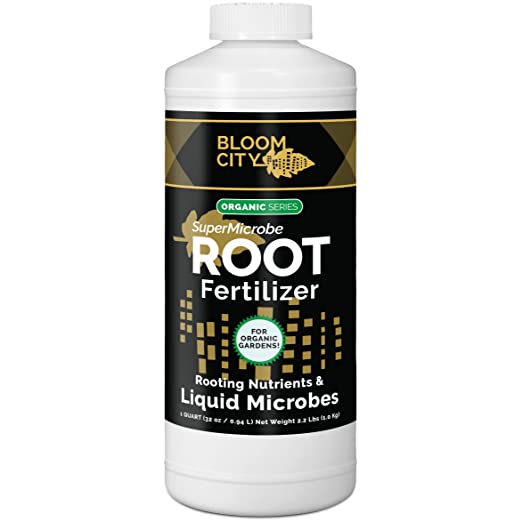
Thinning
Thin your Cilantro seedlings when they are three inches tall for permanent spacing. Use scissors to cut the little plants at the soil level rather than pulling the young plants (seedlings) out as it can damage the root structure of adjacent seedlings.
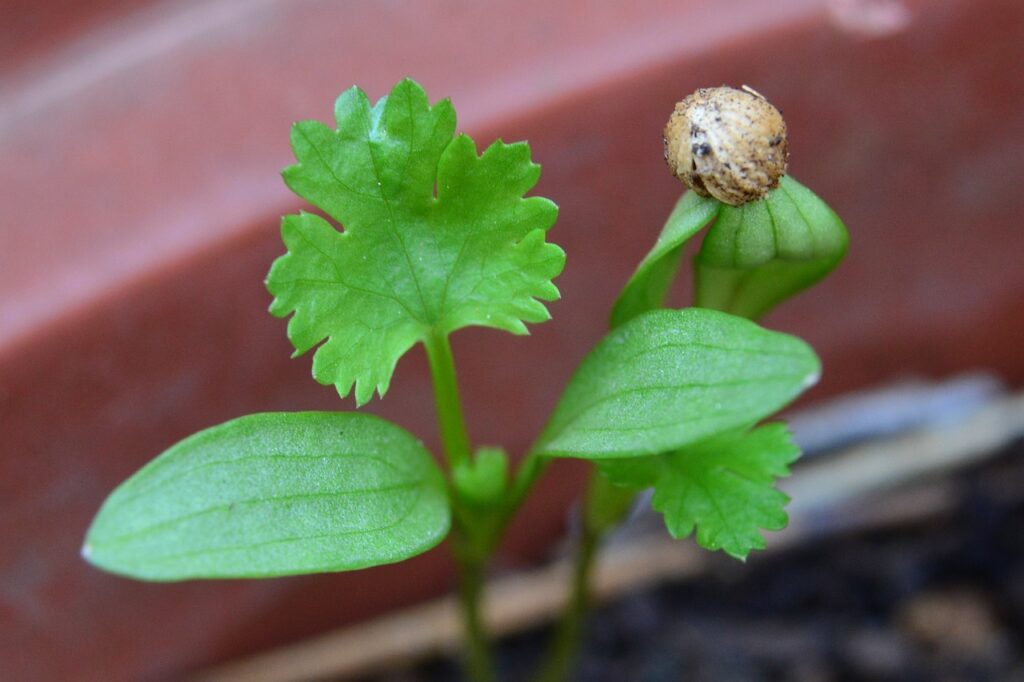
Weeding
Remove weeds and prevent them from getting established. This causes competition for available nutrients in the soil. We want the plant we are growing to get everything available from the soil.
Going to Seed
The hotter days of the early and late summer months will often make your Cilantro “bolt” or “go to seed”. This means that your plant will start flowering and then seed production. This is not a huge problem If you are intending to grow the plant for seeds rather than utilize the leaves and stems.
Cilantro plants that go to seed produce different looking, fern-like leaves, along the flower stalk. The foliage grows 12-18” high, and the flower stems can reach 2-3 feet. White or pale pink flowers grow clustered together. These umbels (Cilantro flowers) are very attractive to small beneficial insects such as adult syrphid flies and parasitic wasps that consume the nectar.
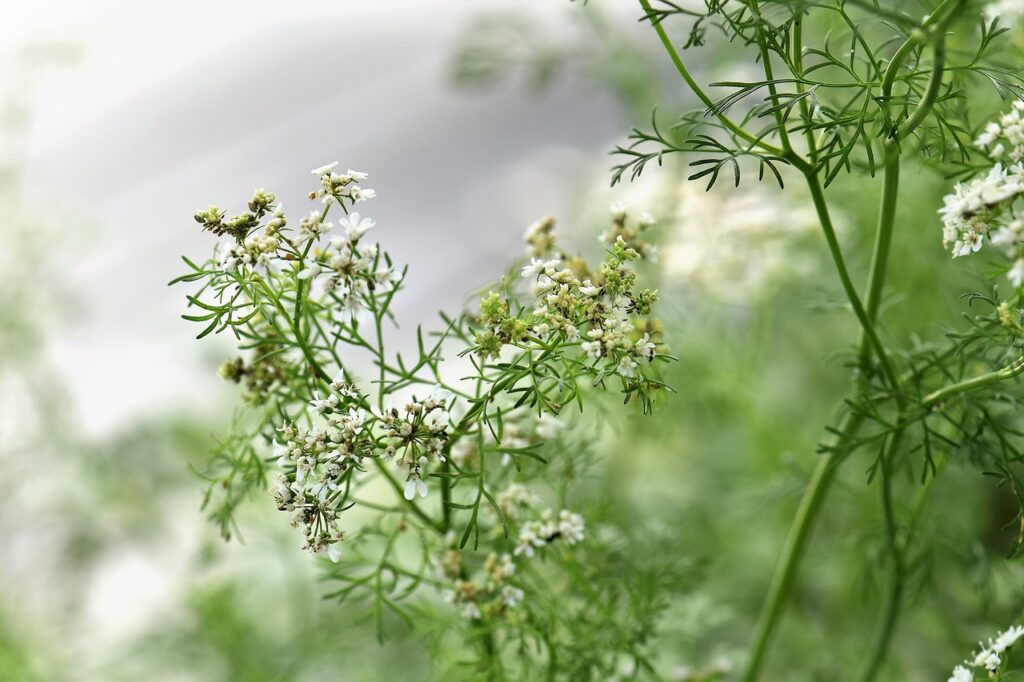
How to Harvest
The method for harvest of course differs on whether you are going after the Cilantro leaves or the Coriander seeds.
Harvest Leaves (Cilantro)
Your harvest season for Cilantro leaves is after the plant reaches 6 to 8 inches. This usually occurs in the 30-to-60-day stage of the plant. The smaller the plant means you should harvest fewer fresh leaves, rather than more, or the plant may be stunted or significantly damaged. The best time to extend the harvest is before the plant flowers. Just snip off the tops of stems before the plant flowers for a continued harvest of leaves.
Seeds (Coriander)
Coriander seeds are grown after the plant has “gone to seed”. The seed heads will be ready for harvest 2 to 3 weeks after flowering when the seeds turn light brown and dried out.
To harvest the seeds, hang the entire plant upside down in a paper bag in a cool, dry place. The seeds will fall into the bag as they ripen.
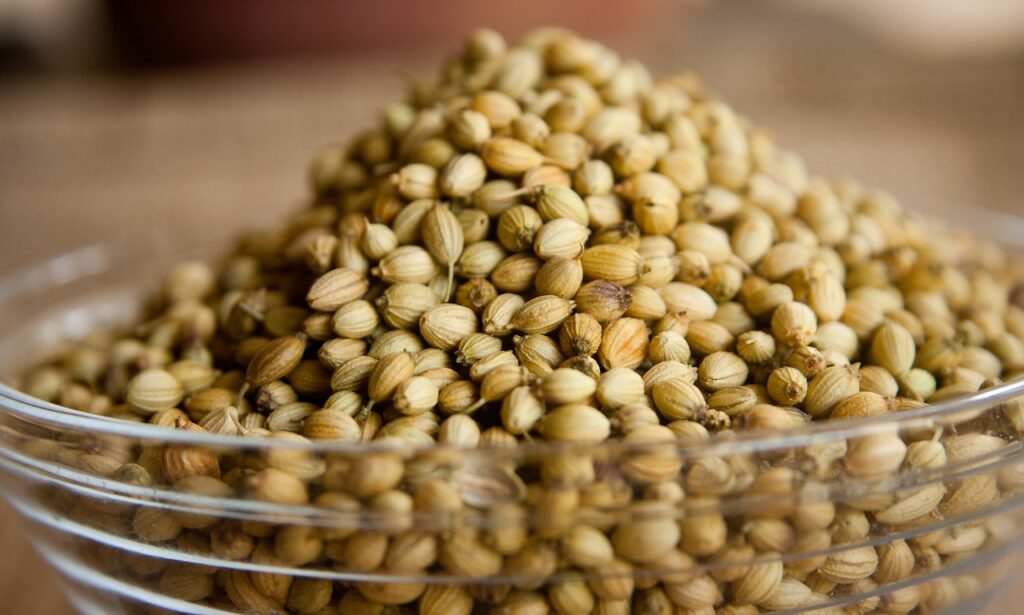
Succession Planting
Plant Cilantro in 2-week succession in order to enjoy fresh Cilantro over the growing season. The quantity of plants is based on how much of the herb you consume or whether you wish to harvest a bunch of seeds for Coriander seasoning.
Companion Planting
Cilantro does not have many predators, but it can repel pests, like mites, and its flowers attract beneficial insects to the garden. Plant Cilantro with anise, garlic, chives, eggplant, and potatoes. Plant near Marigolds to help repel destructive nematodes. Do not plant it near fennel.
Cilantro discourages potato beetles while attracting hoverflies. Hoverfly larvae love to eat at the aphid buffet. Adult syrphid flies and parasitic wasps attract to Cilantro flowers.
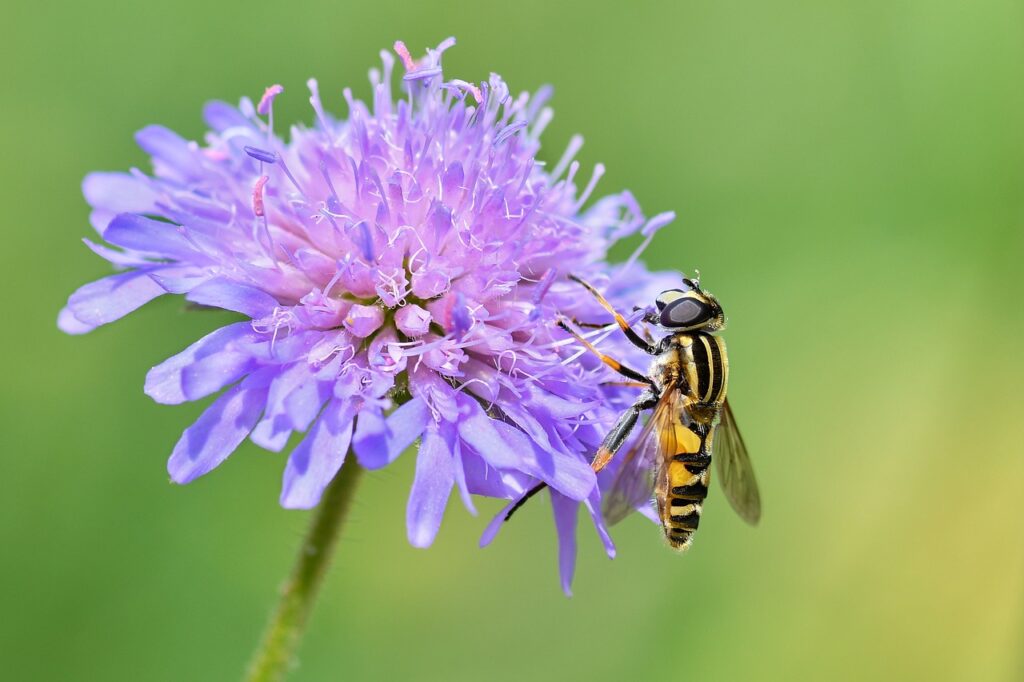
Another strategy is to plant Cilantro near plants that add nitrogen back to the soil, like beans, peas, clover, and any legume type of plant. Nitrogen converts to nitrates which add nutrients for the heavy nitrogen-eating Cilantro plants.
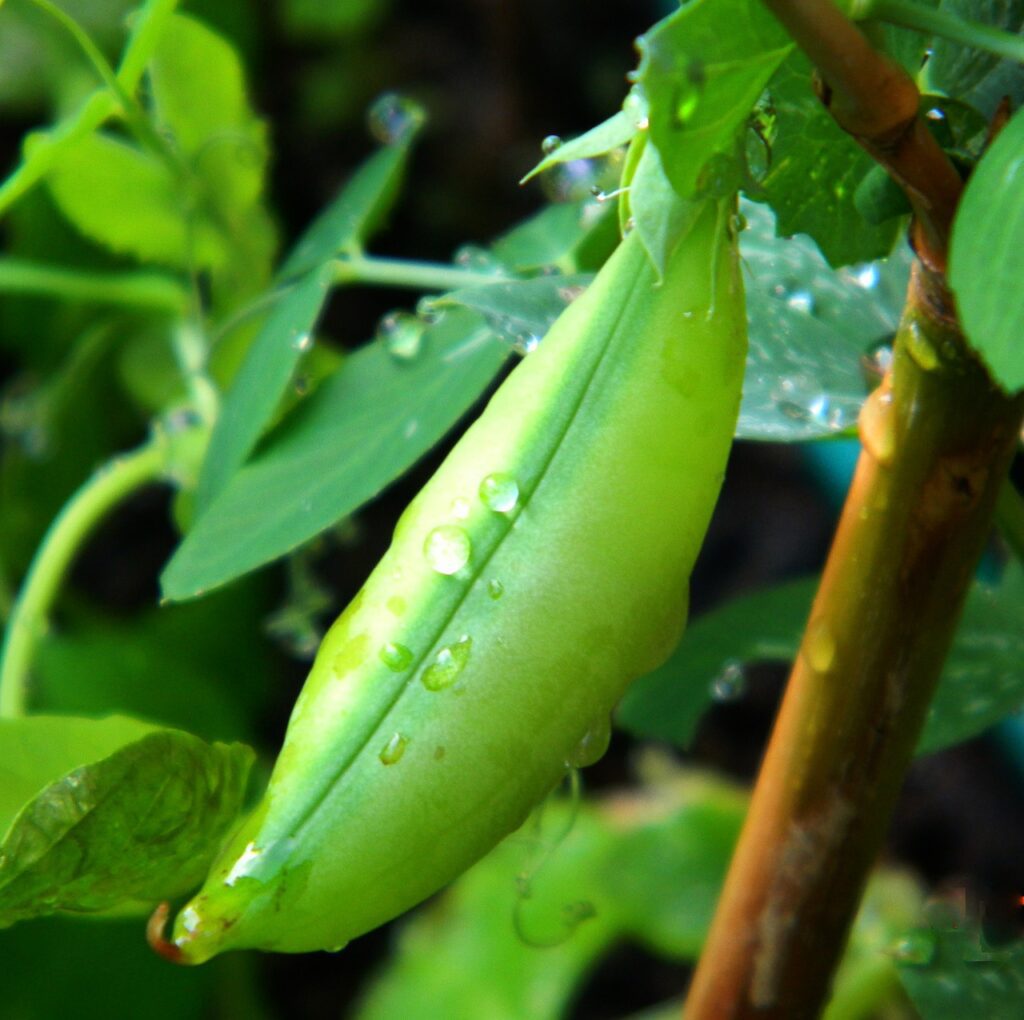
One other consideration on what to plant near your Cilantro is to ensure that you don’t plant a bunch of taller plants right next to shadowing it out of sunlight. In other words, putting a few square feet of corn between it and the sun will result in stunted growth of your Cilantro plant.
Gardening is Local
Somebody once said that “gardening is local”. This means that each gardener needs to evaluate their own soil, climate, or micro-climate, along with the USDA Plant Hardiness Zone, first and last frost dates and what plants can be hardy enough to survive the extreme winter temperatures experienced in your specific garden location. In some cases, it may be hard to pinpoint if you are in one zone versus an adjacent zone. Think about your “local” conditions to ensure you have a successful garden.

Preserving and Storing Cilantro
Refrigeration
Place fresh Cilantro leaves into the refrigerator for up to a week. Leaves lose their flavor as they dry out so use them fresh.
Drying
You can place the seed in a dehydrator or just leave them out inside the house to help dry them out. You do want to dry them before using.
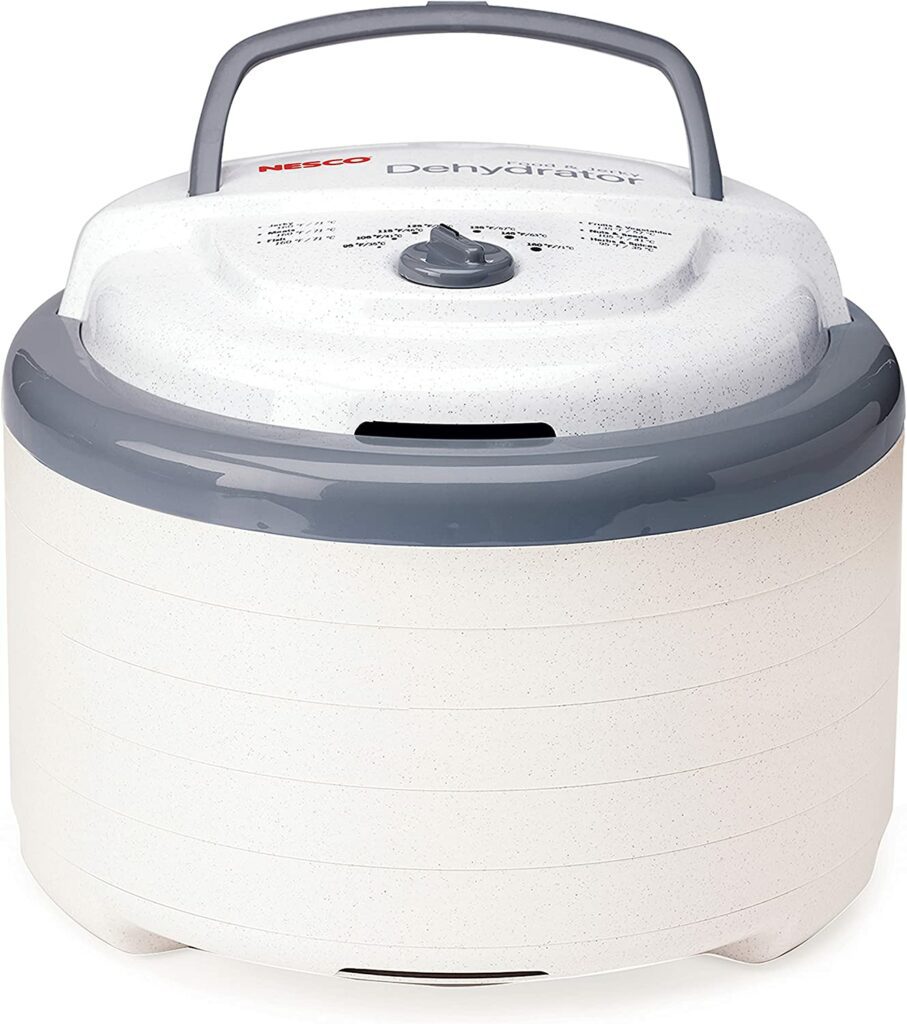
Freezing
You can freeze Cilantro in a Ziplock or vacuum seal bag, but they will not have that Cilantro or Coriander aroma or taste. They just don’t freeze that well.
Storing
Cilantro leaves are best fresh off the plant, but they can be dried and stored in an airtight container. You can also preserve Cilantro leaves by making Cilantro butter or infused vinegar.
Before storing your seeds, you will want to scald them to ensure they do not have any bugs present (that you can’t see with the naked eye). Store them for several months in an airtight container.
Cilantro Varieties
Growers break cilantro into four categories with all having both leaves and seeds. Some types are just better than one or the other.
Leaf Cilantro
Leaf Cilantro, sometimes called Chinese or Mexican parsley, closely resembles parsley with it flat, toothed leaves. It has a pungent flavor and aroma. If Cilantro leaves are your favorite, make sure the plant has partial shade during the hottest days, or choose varieties, like Slo-Bolt, to suppress the plant from bolting. Long Standing and Leisure are two varieties known for not going to seed as quickly in the warmer months. Calypso is another slow-to-bolt variety.
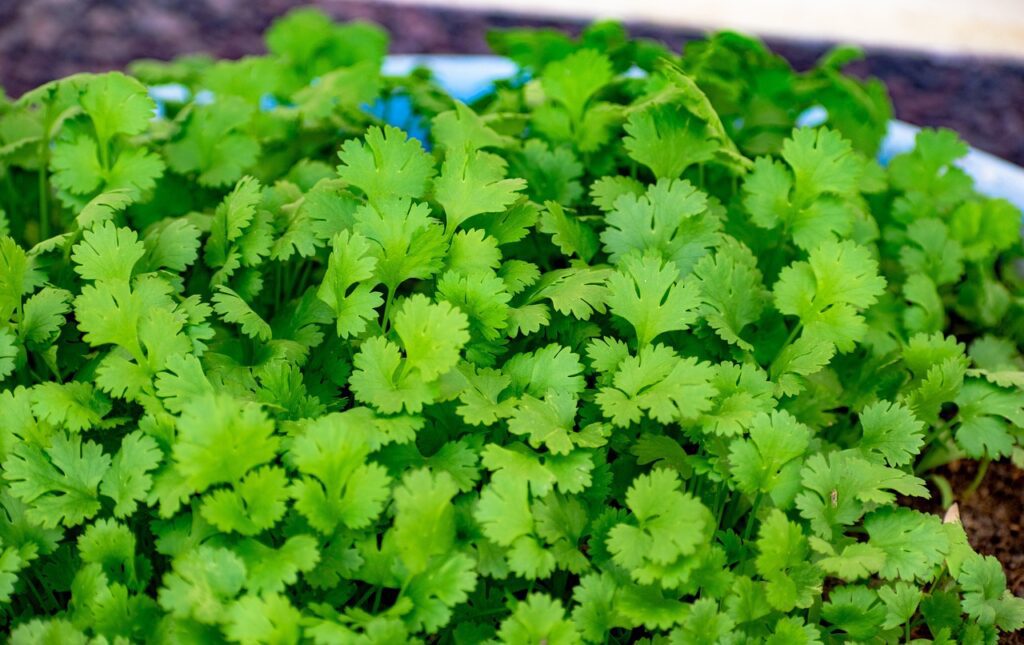
Coriander
The seed of the Cilantro plant is also referred to as Coriander. The difference is that Coriander, the seed, is considered a spice rather than an herb. If your goal is to harvest seeds, avoid using slow-to-bolt varieties and allow your plants to go to seed. Santo is a variety that begins to produce seeds about 10 days earlier than other slow-to-bolt types.
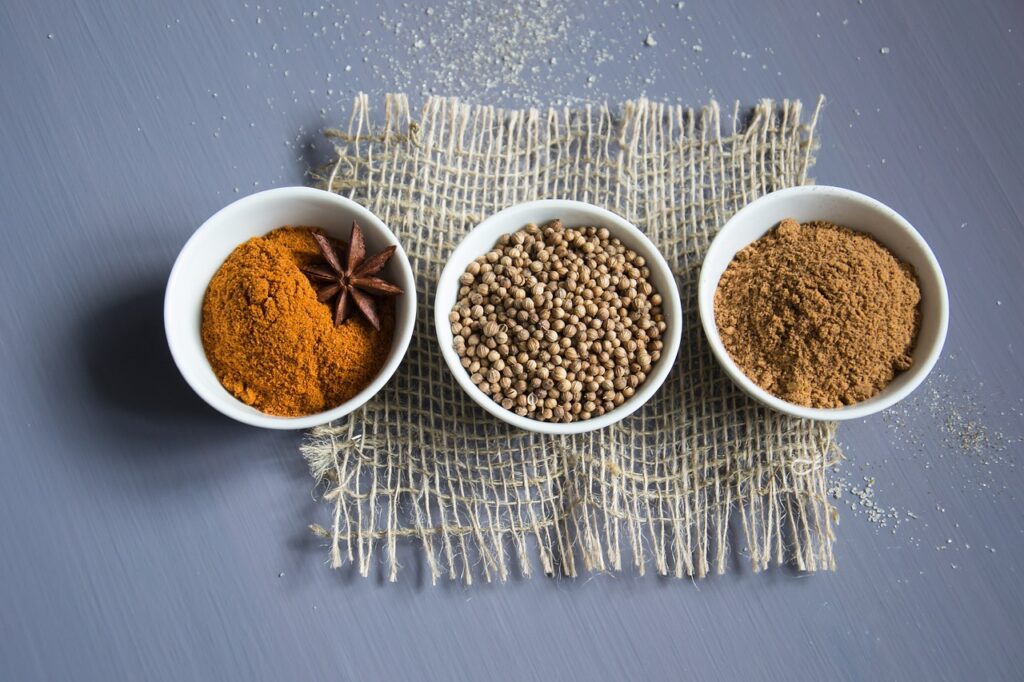
Vietnamese Cilantro
Vietnamese Cilantro tolerates the heat well and thrives in Zone 10 or upward. It’s referred to as Rau Ram. The plant has long, slender leaves with smooth edges. This Cilantro prefers afternoon shade and moist soil.
Culantro
Also known as spiny coriander, Culantro is popular in the many Caribbean and Asian dishes. You can use Culantro in place of leaf cilantro if you like, and if you grow it yourself, keep in mind that it prefers moist soil with a lot of shade. When it is fully grown, Culantro can grow up to one foot high with leaves that are two inches in width. Culantro is different than cilantro, although they are botanical cousins, and it is in the same family as parsley, carrots, and parsnip.
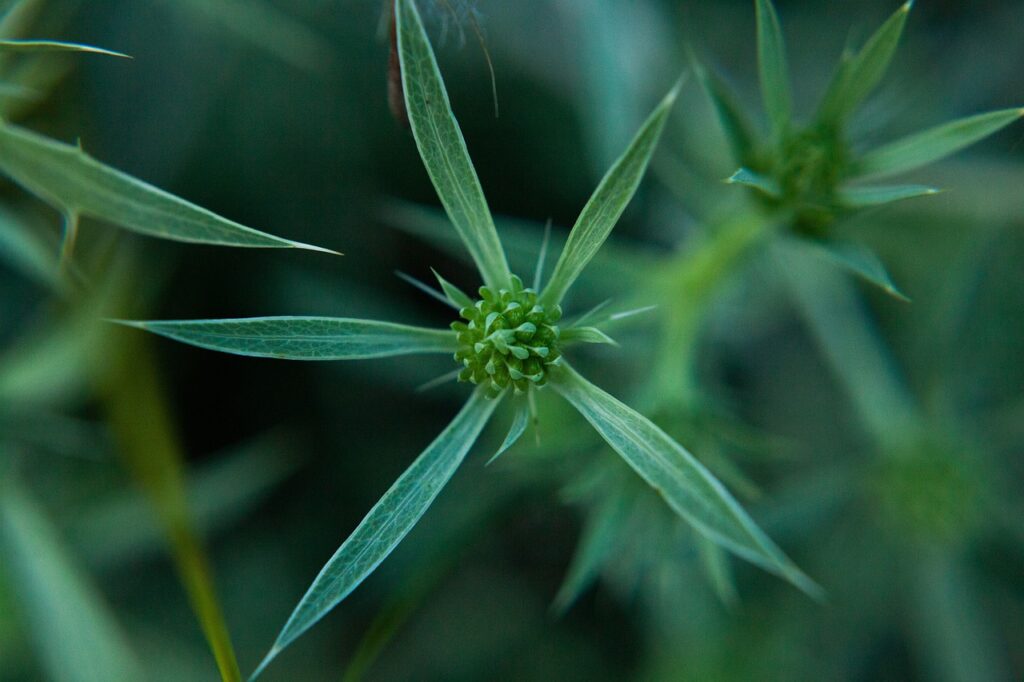
Cilantro Troubleshooting
Seed Germination
Soil Too Dry
The soil and the seed must not dry out while the seed is trying to germinate. It must be watered regularly to germinate the cilantro seeds. Check moisture daily and keep soil moist, but not where there is standing water or not being absorbed into the soil.
Seedlings
Need Moore Light
The most likely contributor to lack of growth is that the seedling needs more light. If inside, use a grow light or put on windowsill that receives sunlight. If outside, check to make sure it’s not shaded and getting 4 to 6 hours of sunlight.
Seedlings Too Crowded
Another potential problem is that the seedlings are too crowded and are fighting over the nutrients. If multiple seedlings are clumped together or within 4-6 inches of each other, thin down and keep the best seedlings. If close, cut with scissors instead of pulling up to make sure you don’t hurt the root structure of seedlings that are staying.
Overwatered
You do need to water the seedlings regularly, but you also don’t want to overwater the Cilantro seedlings. As a seedling, the root structure is not too deep yet. Water enough to get down to the roots. Push your finger in the soil down to your 2nd Knuckle, if it feel moist at the tip of your finger, then you are okay.
Pests
Aphids
These small soft-bodied pests, usually green or yellow in color, get on the underside of leaves and/or stems of plants and begin to feed. They secrete a sticky, sugary substance called honeydew which encourages the growth of sooty mold on the plant. It also attracts ants, so when you see ants on a plant, look around and see if there are any aphids.
A nice stream of water directed on the infected area is usually all that is needed to eliminate the aphids. It knocks them off the plant and they can’t get back on it. If heavy infestation, Neem oil is a good organic method to control aphids.
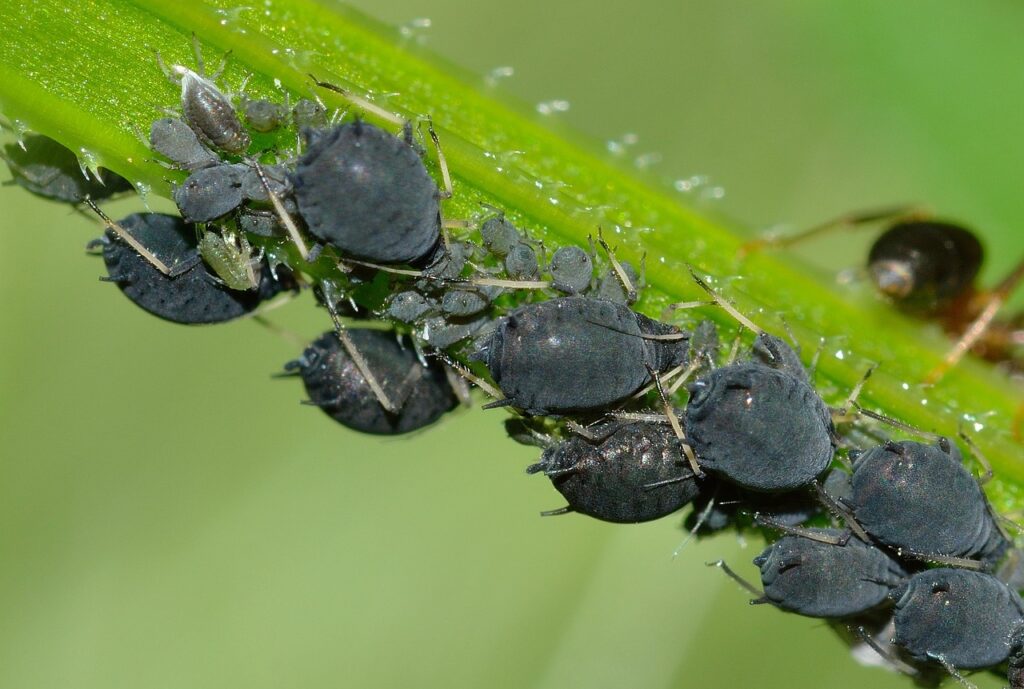
Cutworms
Cutworms can be found chopping down several types of garden plants. Handpick the Cutworm larvae on the top of the soil at night. Neem oil, or even better, BT, is a good organic method to control cutworms.
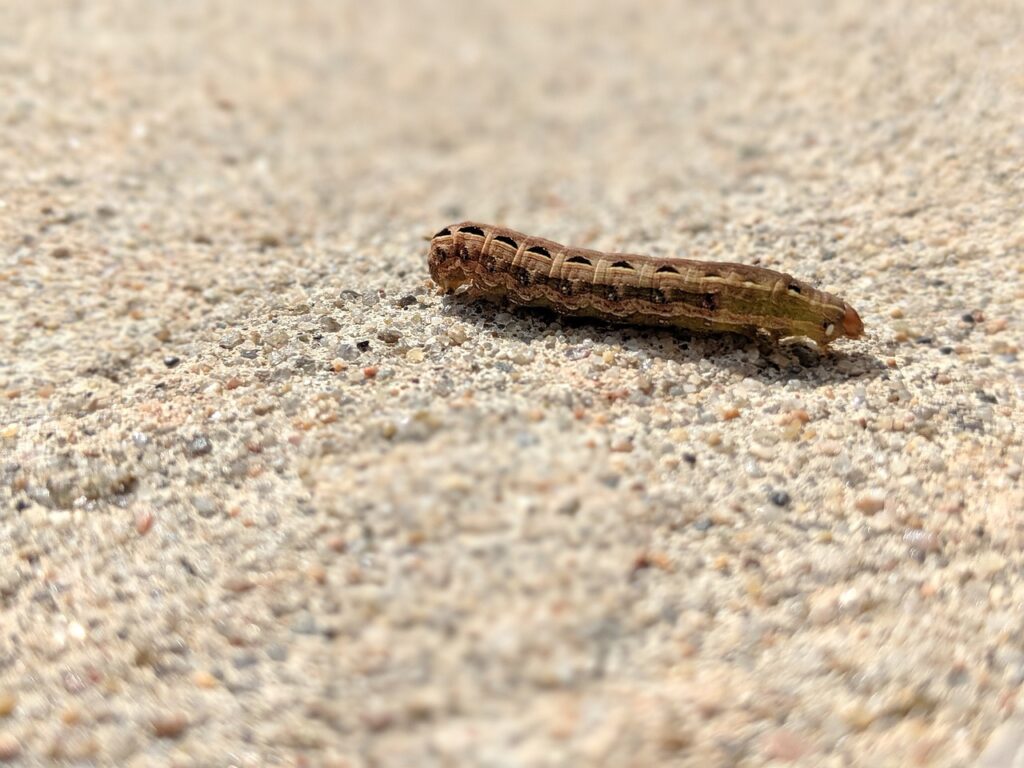
Nematodes
Nematodes can attack cilantro roots which typically results in a lack of plant vigor and yellowing of leaves in hot weather. Solarizing the can reduce nematode populations. Repel nematodes by planting marigolds nearby.
Disease
Bacterial Leaf Spot
Plants with this disease show a very small water-soaked spot between leaf veins which enlarge and turn dark brown to black. Stems may have dark streaks. Disease can be transmitted by infected seed or through rain or watering your plants causing the bacteria to ricochet up on the plant. Avoid overhead watering and avoid handling plants when wet.
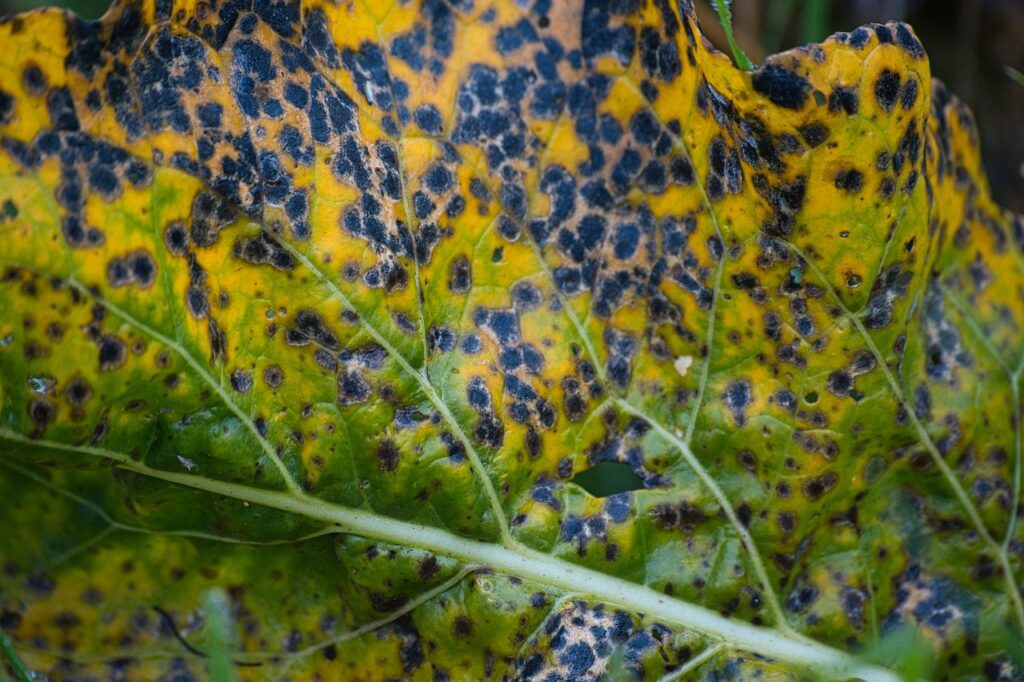
Soft Rot
Plants with Soft Rot has small water-soaked lesions near base of petioles which become soft, sunken, and brown. Bacteria thrive in oxygen depleted plant tissue. For disease to take hold, it requires long periods of water saturated soil. The bacteria enter in through wounds. Avoid conditions conducive to bacterial infection with managing excess water conditions over days and allow plants to dry before watering them. Another thing to do is to disinfect all gardening equipment regularly.
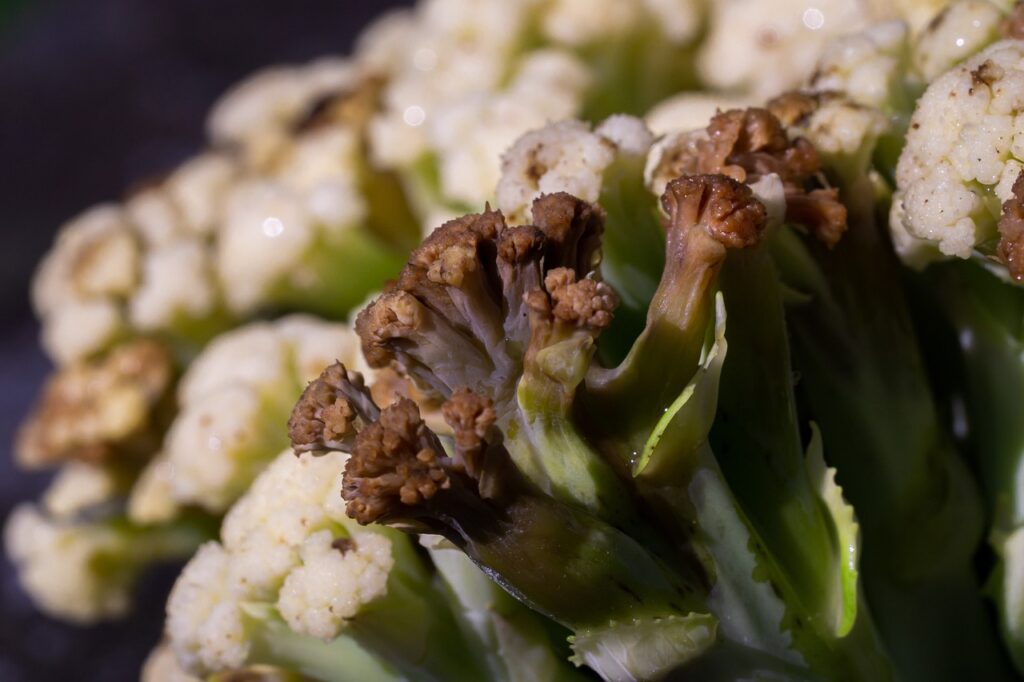
Root Rot
Signs of Root Rot include wilting and discolored leaves. That’s the first sign that you may be having root rot since the roots cannot properly absorb moisture and nutrients. The roots themselves will appear soft/spongy and dark brown or black. Root rot is a fungal infection that typically requires some surgical removal of the root and adjacent soil to get the fungal infection under control. In many cases, the squeeze may not be worth the juice so the plant would end of dying.
Damping-Off
The Damping-off fungal disease symptoms include soft rotting seeds failing to germinate, rapid death of seedling prior to emerging above the soil and rapid death of the plant after it emerges caused by water-soaked reddish lesions girdling the stem at the soil line. Fungi can be spread in water, contaminated soil or on equipment. Avoid planting your Cilantro in soil that does not drain well. You may also want to sow high quality seed that germinates as quickly as possible. Finally, you can treat seeds with a fungicide prior to planting to eliminate fungal pathogens.
Powdery Mildew
A white powdery growth on your plants may indicate the presence of the Powdery Mildew fungal disease. The fungal spores can travel long distances in the air. High humidity and moderate temperatures, along with shade, helps accelerate the disease. This usually doesn’t have a major impact on the plant but application of an organic fungicide like Neem oil can help.
Health Benefits of Cilantro
Herbs have been used medicinally since ancient times. Cilantro is one of them. Modern research methods are finding support for some of the health claims attributed to this plant. Much more research is needed to accurately validate these purported benefits.
Some health benefits of cilantro may include:
Brain Health
Several studies have linked eating Cilantro with reduced symptoms of cognitive diseases like Alzheimer’s and Parkinson’s disease.
In one study, cilantro extract reduced seizure attacks and prevented nerve-cell damage in rats. In another, when fresh cilantro leaves were added to the diets of laboratory mice, scientists saw improvements in their memory.
Reduced Anxiety
In animal studies, extracts from the cilantro plant have proven almost as effective as medication at reducing anxiety symptoms. Studies with human subjects are still needed.
Blood Sugar Management
Cilantro is so well-known for its ability to lower blood sugar that people with low blood sugar or those taking diabetes medications are warned to be careful with the herb.
In animal studies, coriander seeds reduced blood sugar by stimulating an enzyme that removes sugar from the blood.
In another study, cilantro extract decreased blood sugar in rats with obesity and high blood sugar. The effects were similar to the blood sugar medication glibenclamide.
Prevent Foodborne Illnesses
The cilantro plant contains dodecenal, an antimicrobial compound that may help protect your body against infections and illnesses caused by tainted food. The compound is effective against Salmonella, a microbe that can cause life-threatening food poisoning.
Another study found that compounds in cilantro are effective against several bacteria, including those that cause foodborne illnesses and hospital-acquired infections.
Nutrition and Minerals
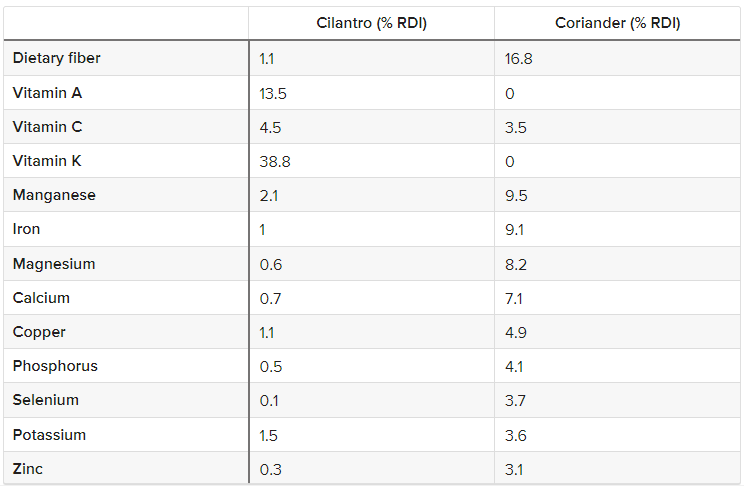
Figure 1: Nutritional and Minerals Chart for Cilantro (www.healthline.com)
Please note that fresh cilantro is 92.2% water. Meanwhile, coriander seeds are only 8.9% water. This is a major reason why cilantro has lower levels of minerals by weight, as the water in cilantro contains no minerals or calories.
Culinary Use
Cilantro leaves have been used for flavor and garnish, while Coriander (seeds) have been used for seasonings, for 1000’s of years. It’s used as an essential ingredient, garnish, or as a seasoning in Middle Eastern, Mexican, Mediterranean, Thai and Asian cuisines.
Cilantro lovers say it has a fresh citrus taste with a strong aroma, while the haters say it has a soapy taste and a pungent smell. About 14–21% of people of East Asian, African, and Caucasian origin dislike coriander, while only 3–7% of people of South Asian, Hispanic, or Middle Eastern origin dislike it.
Genetic Distaste of Cilandro
Somewhere around 10% of the population think cilantro taste like soap. Scientific studies determined most cilantro haters are people with a shared group of olfactory-receptor genes, called OR6A2, that pick up on the smell of aldehyde chemicals. Aldehyde chemicals are found in both cilantro and soap.
Frequently Asked Questions
Which countries use the most Cilantro in the world?
According to data from the Food and Agriculture Organization of the United Nations (FAO), the top three countries that use the most cilantro are China, India, and Mexico.
Which countries exports the most Cilantro in the world?
World Integrated Trade Solution reports that the top exporter of coriander seeds in 2019 was India, followed by the European Union, Italy, Russia, and Bulgaria. But the United States and Mexico serve as the most prolific growing regions for the plant and its resulting cilantro leaves.
Conclusion
Cilantro is a great addition to your herb garden, vegetable garden, or even inside on a windowsill in a small container. Cilantro and Coriander have been used in culinary practice for thousands of years. Herbs, including Cilantro, are so easy to grow and picks up all recipes so it would make a great addition to your herb or vegetable garden and containers.
Garden On!
If you like this content, check out my What Zone is Louisiana for Plants post. You will also like my video How to Protect from the Squash Vine Borer on my Louisiana Simple Living YouTube channel.

Leave a Reply